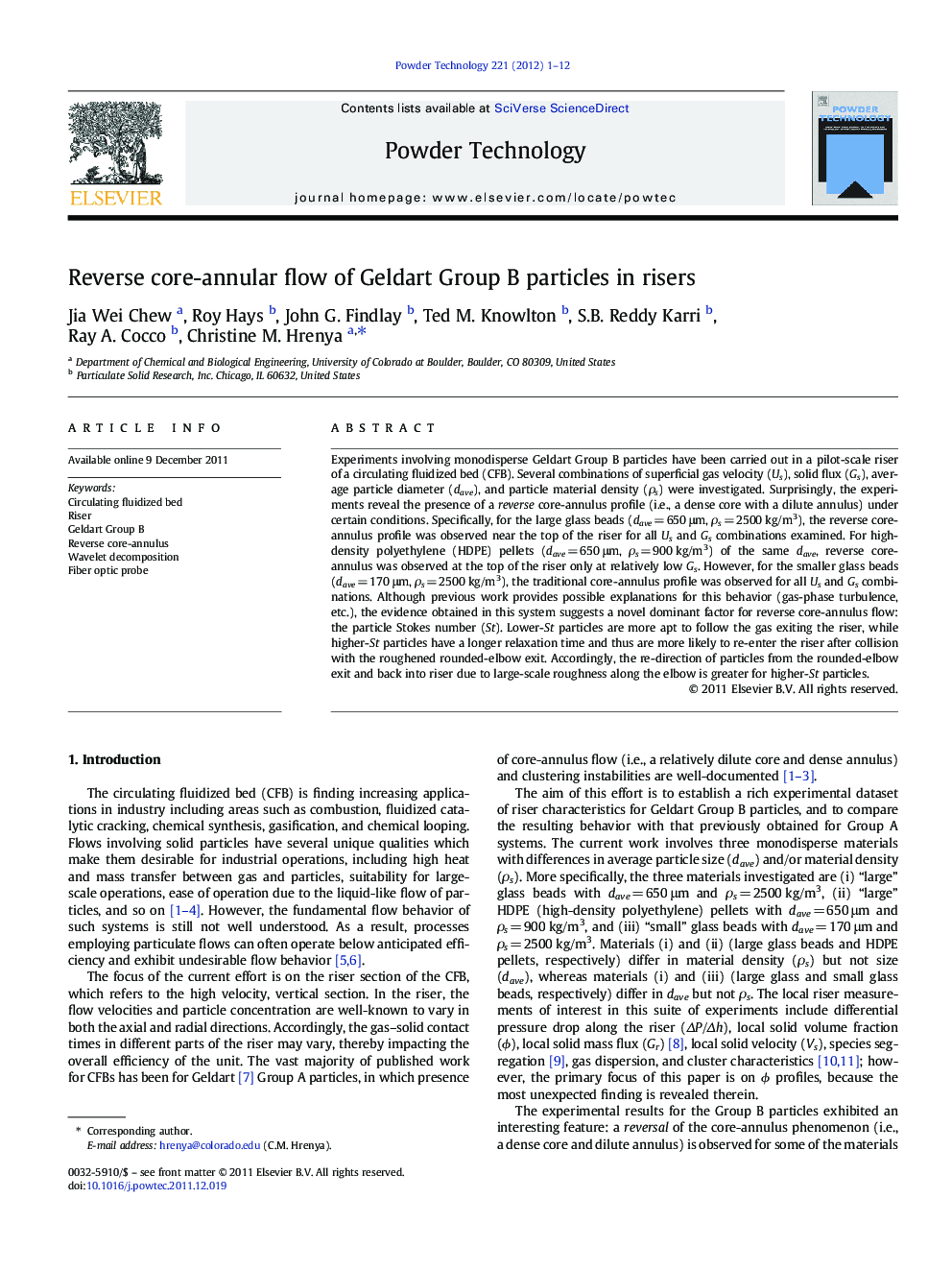| کد مقاله | کد نشریه | سال انتشار | مقاله انگلیسی | نسخه تمام متن |
|---|---|---|---|---|
| 237207 | 465698 | 2012 | 12 صفحه PDF | دانلود رایگان |

Experiments involving monodisperse Geldart Group B particles have been carried out in a pilot-scale riser of a circulating fluidized bed (CFB). Several combinations of superficial gas velocity (Us), solid flux (Gs), average particle diameter (dave), and particle material density (ρs) were investigated. Surprisingly, the experiments reveal the presence of a reverse core-annulus profile (i.e., a dense core with a dilute annulus) under certain conditions. Specifically, for the large glass beads (dave = 650 μm, ρs = 2500 kg/m3), the reverse core-annulus profile was observed near the top of the riser for all Us and Gs combinations examined. For high-density polyethylene (HDPE) pellets (dave = 650 μm, ρs = 900 kg/m3) of the same dave, reverse core-annulus was observed at the top of the riser only at relatively low Gs. However, for the smaller glass beads (dave = 170 μm, ρs = 2500 kg/m3), the traditional core-annulus profile was observed for all Us and Gs combinations. Although previous work provides possible explanations for this behavior (gas-phase turbulence, etc.), the evidence obtained in this system suggests a novel dominant factor for reverse core-annulus flow: the particle Stokes number (St). Lower-St particles are more apt to follow the gas exiting the riser, while higher-St particles have a longer relaxation time and thus are more likely to re-enter the riser after collision with the roughened rounded-elbow exit. Accordingly, the re-direction of particles from the rounded-elbow exit and back into riser due to large-scale roughness along the elbow is greater for higher-St particles.
We observe a reversal of the conventional core-annulus flow in the riser of a CFB, which stems from the large Stokes number (St) of Geldart Group B particles. While lower-St particles closely follow the exiting gas, higher-St particles have a longer relaxation time and thus are more likely to re-enter the riser after collision with the roughened rounded-elbow exit.Figure optionsDownload as PowerPoint slide
Journal: Powder Technology - Volume 221, May 2012, Pages 1–12